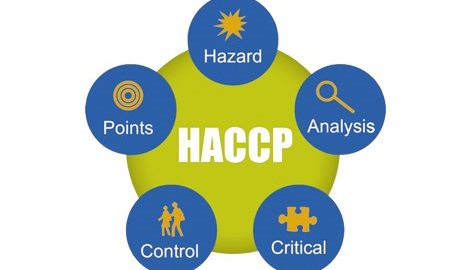
Illustration (Source: Internet)
HACCP was initiated three decades ago to provide safe food for the NASA space program (US space and aerospace agency). HACCP is a quality management system, food safety and hygiene that is applied to the food industry. HACCP is an abbreviated phrase: “Hazard Analysis and Critical Control Point”
HACCP principles can help us analyze the hazards that lead to food insecurity, and identify critical control points, and take appropriate precautions.
HACCP is widely applied in the world
HACCP has been recognized by global organizations: the Codex Alimentarius, the European Union (1995) and a number of other countries including Canada (1991), USA, UK, Japan, Australia. Directive No. 94/356/EC stipulates that processing enterprises exporting seafood to the EU must apply the Own check program (HACCP).
According to FDA regulations, from December 18, 1997, all enterprises exporting seafood products to the US market must apply HACCP. From 5 pilot enterprises in 1995, up to now, the fishery industry has over 100 enterprises producing seafood on an industrial scale nationwide.
The main content of HACCP
HACCP is a system that is proactively preventive rather than passive coping, focusing on the whole process rather than relying on the results of the finished product inspection as the traditional quality control method (KCS) . However, HACCP still focuses on key points in the process that are important for food safety
Two prerequisites for implementing HACCP are: Good Manufacturing Practice (GMP) and Sanitation Standard Operating Procedures (SSOP) in order to work.
The application of the HACCP system requires technical expertise, careful study of the steps of food processing, from preparation, production to storage, distribution and handling of customers. use. If HACCP is applied right at the initial stage of the food system, it will significantly reduce the risks of food safety.
Hazard analysis is a key issue of HACCP. To conduct a hazard analysis, in order to develop a HACCP plan, food processors must have a realistic understanding of potential hazards. These hazards are classified into three categories: biological, chemical and physical.
(1) Biological hazards, including pathogenic bacteria, viruses or parasites. When growing, microorganisms often produce byproducts. The more they grow, the more byproducts are toxins and can cause disease.
(2) Chemical hazards, including compounds that may cause disease or harm caused by direct, long-term exposure at any stage of food manufacturing and processing.
(3) Physical hazards, including impurities and foreign bodies in foods that may cause harm when eaten as glass or metal fragments, are hazards that can cause illness or harm to people eating.
Benefits of HACCP
The application of HACCP will help companyidentify identifiable and actual hazards in practice; reduce product losses; and good addition to other quality control systems such as ISO 9000.
Productivity and Quality Office